Swords in Casseroles
hive-140635·@macoolette·
0.000 HBDSwords in Casseroles
No. I don't mean that you cook a sword. For a short intro and recap from years ago, I have an unplanned [terrace garden](https://peakd.com/hive-140635/@macoolette/the-unplanned-terrace-garden) which stemmed from my side hustle during the pandemic - reselling ornamental plants. As some of my relatives said, that is already the urban gardening since we do not have open space for a garden in the real sense of it. It became my experimentation ground to get to know different types with different varieties of plants. I propagated some, I killed some. Others are still struggling to thrive as I am still learning how to take care of and propagate them. One of the plants that are so easy to propagate and take care of is the snake plant. It is even fair to say it does not need attention. You can throw it to the ground and it will find its way up. From my reselling transactions, I learned that the collective scientific name of snake plants is Sansevieria. They are also called a common name as sword plants. 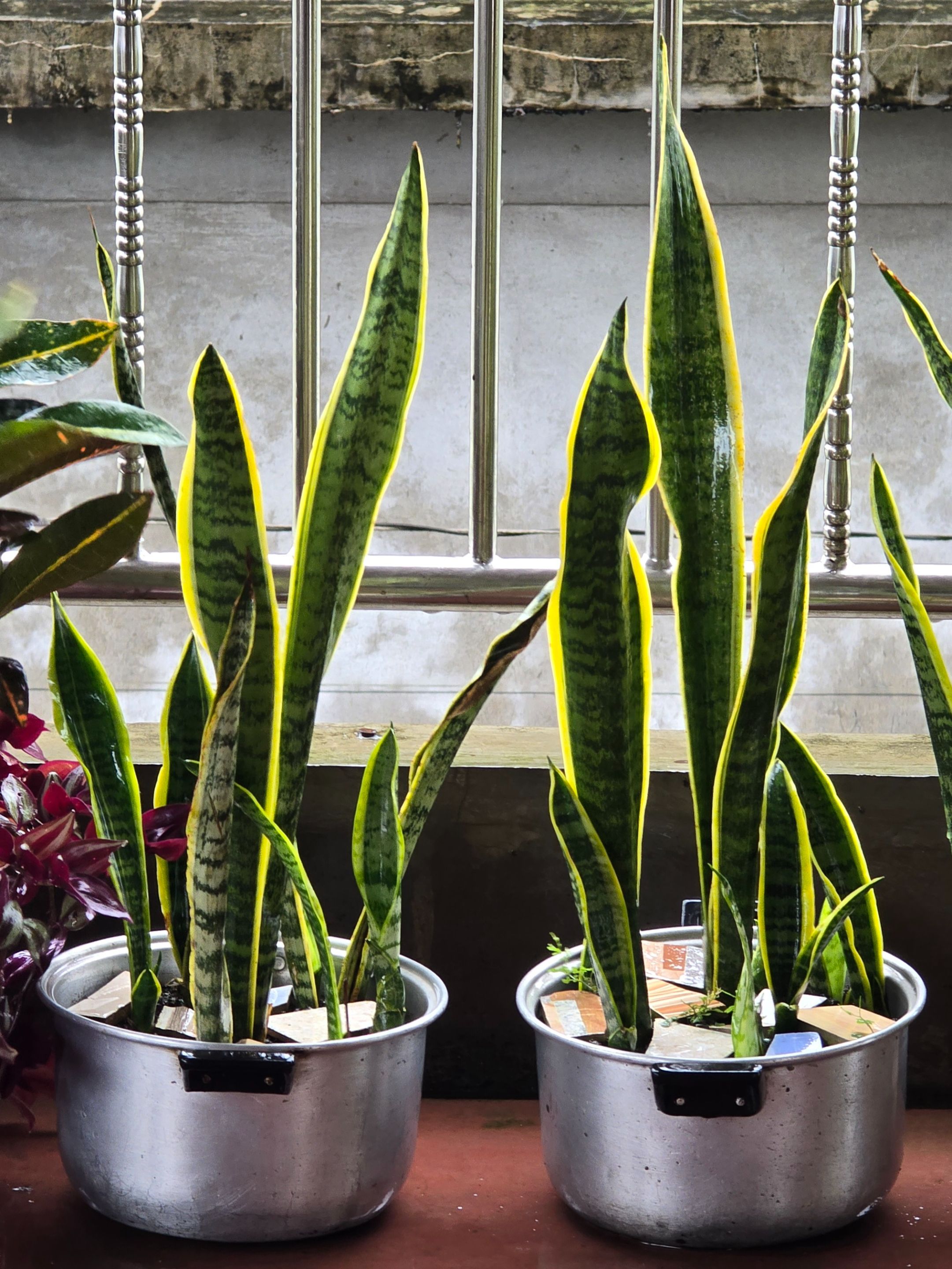 I got my first snake plant from a pot abandoned by one of my tenants. I think it is the most common variety because many are literally just thrown along pathways and I rarely see it being sold. It has the green and white-grey color. According to the [internet](https://www.gardenerbasics.com/blog/sansevieria-varieties), it is the Sansevieria Zeylanica variety. The pot I had several sprouts that I split and planted into seven different pots. They were just about 30 cm tall when I had them. Today, I measured the tallest sword and is 110 cm, more than triple their initial height. I am so pleased. 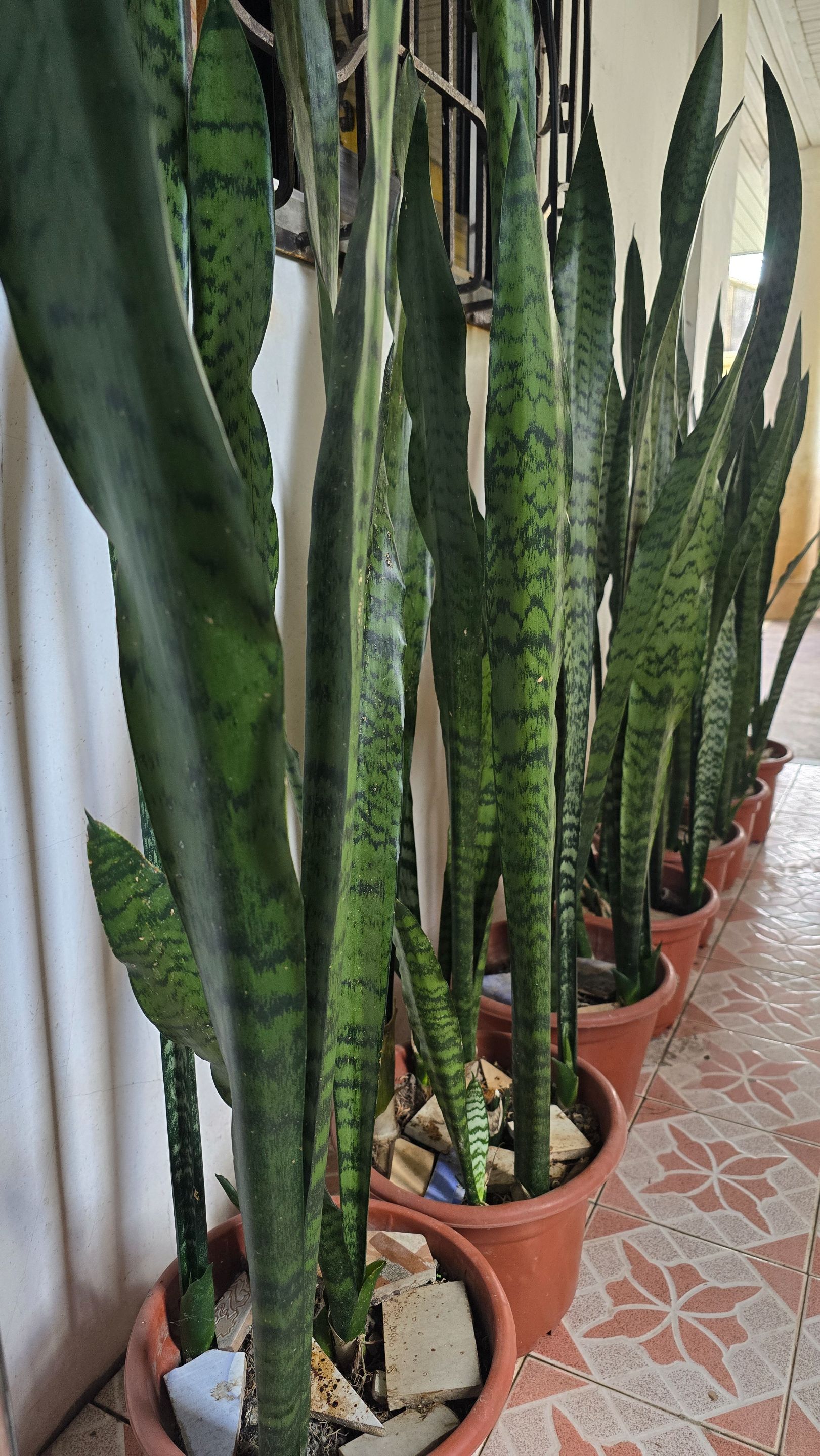 <sup>In case you are wondering, the broken tiles on top of the soil are to guard house birds from scratching the dirt out of the pots and scattering them all over the floor. When I haven't done that yet, flocks of birds would convene everyday on different pots and keep scratching. When I posted about that on social media, someone said that the birds are looking for food from the soil.</sup> The second variety that I have is the one with yellow strip along the leaf outline. According to the internet again, it is the Sansevieria Trifasciata Laurentii variety. I do not remember where I got mine, whether I bought one to start with or someone gave to me. What I know now is that I had seven pots too. My niece took one pot. In terms of color, I have to admit this Laurentii variety looks more appealing with its yellow edges. The internet says this can grow up to four feet (120 cm) like that Zeylanica variety. However, my Laurentii did not grow as high as my Zeylanica. My tallest Laurentii is 63 cm. I guess it is because they were planted in smaller pots. 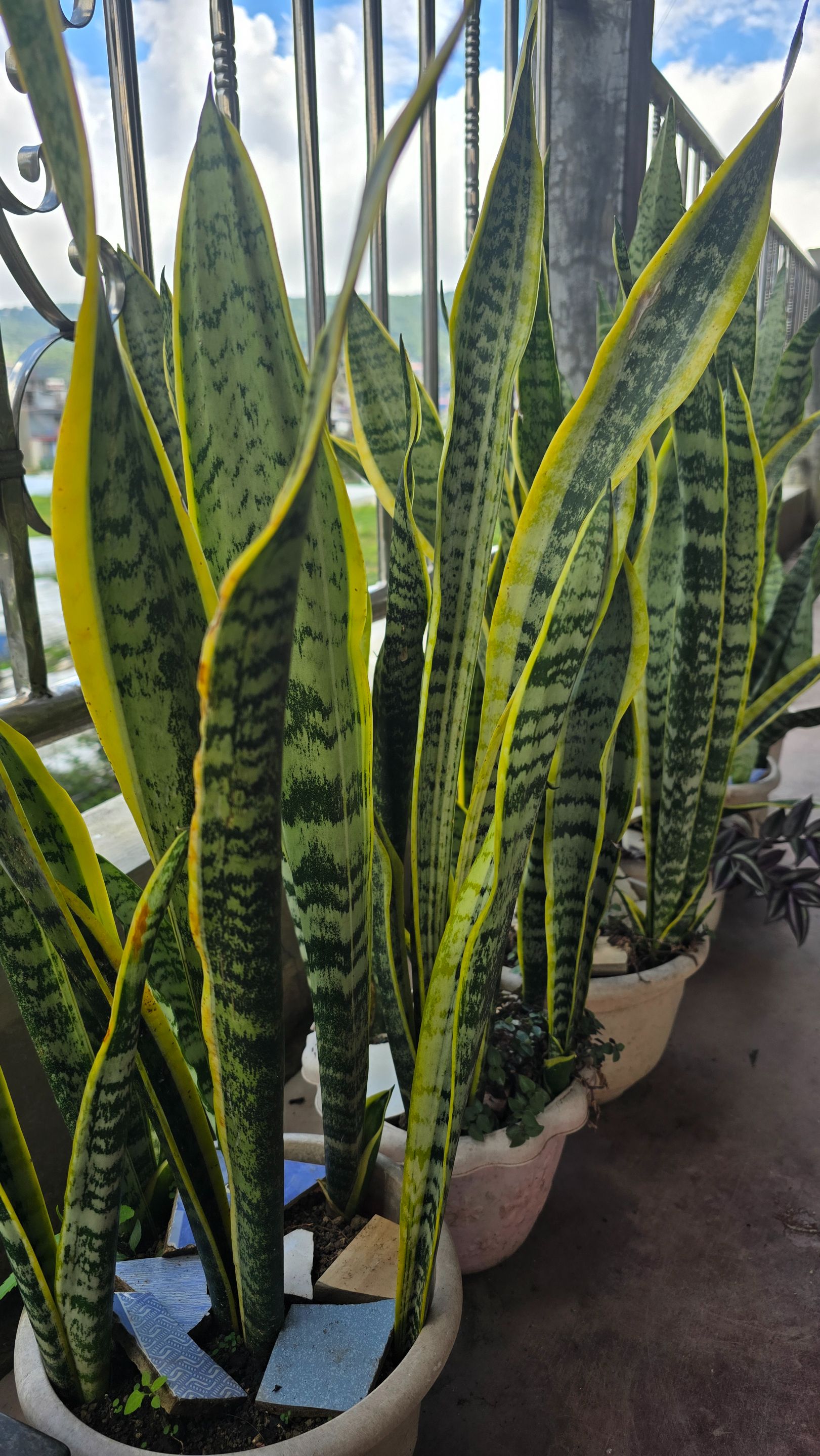 Another variety that I have but cannot find its name on the internet is something like the Zeylanica but with a bit curly and wider leaves. They also grow like the Laurentii variety - smaller than Zeylanica. The tallest leaf is 67 cm high. Again, maybe it is because they were planted in smaller pots. This unknown variety also does not grow as straight upward as Zeylanica. Instead, the leaves spread out to the sides. I have only two pots of this. I thought I have them from what I picked along a sidewalk. 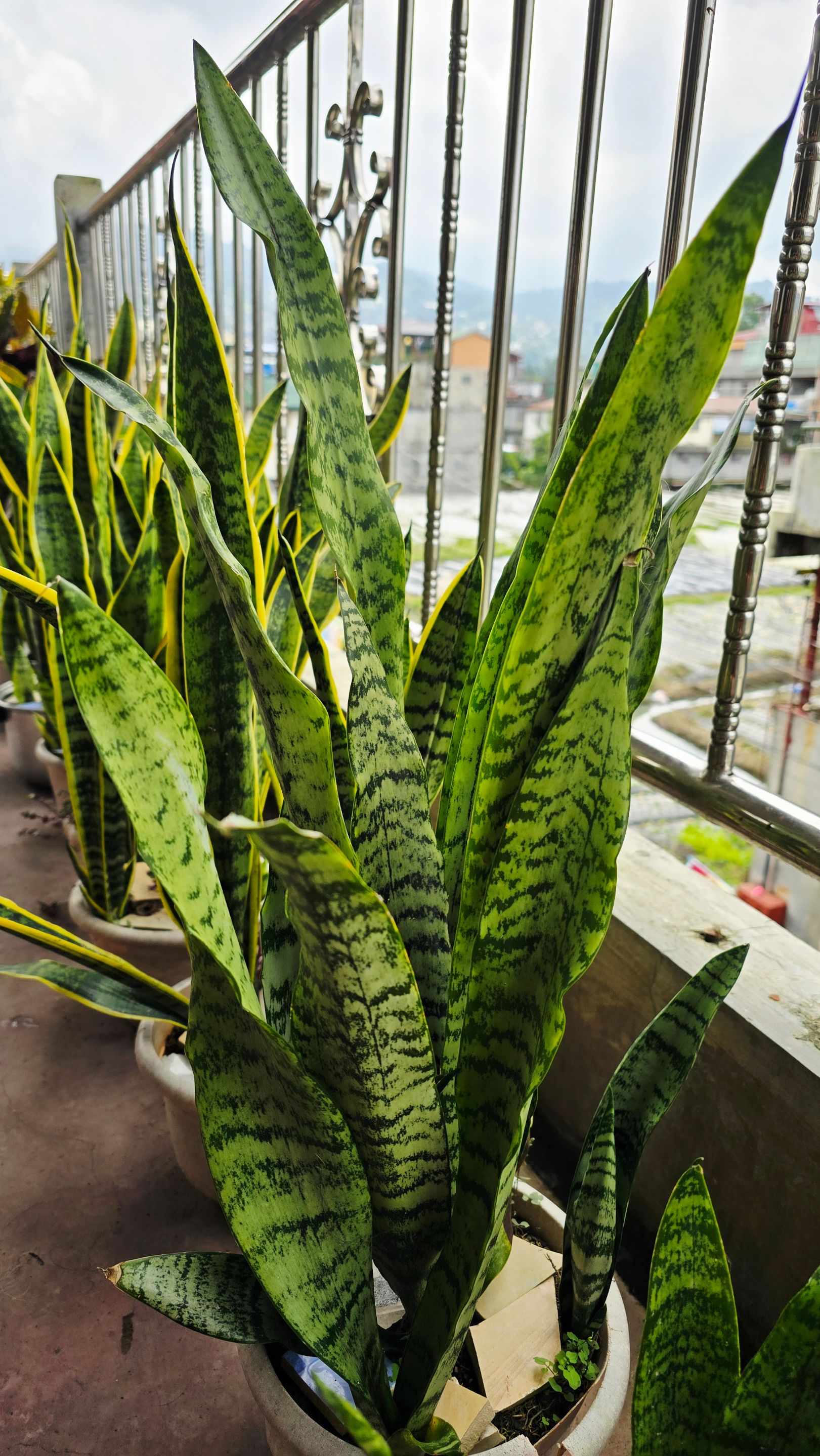 What is common to all varieties is that they thrive without much attention. They are the kind of plant that still thrives even without being watered for a month or so. I was actually amused when I realized this during summer when water supply was scarce. "You're like cacti and succulents?" I asked them in my head. Another common trait of the snake plants is that they grow and propagate fast on their own - even without regular watering as mentioned. They would even destroy their plastic pots just to multiply. Just look at the following photos. Talk about being unstoppable, huh? 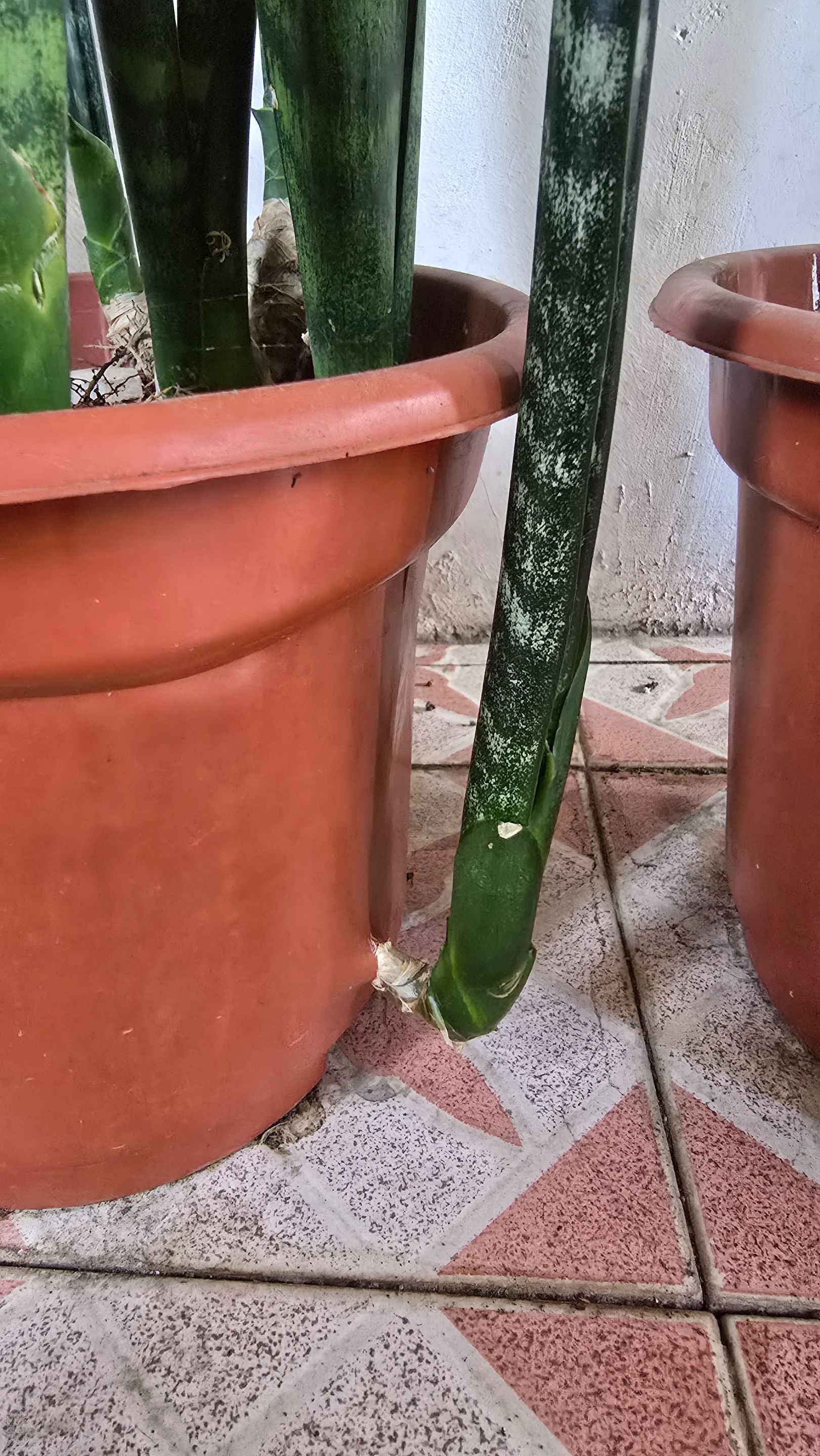 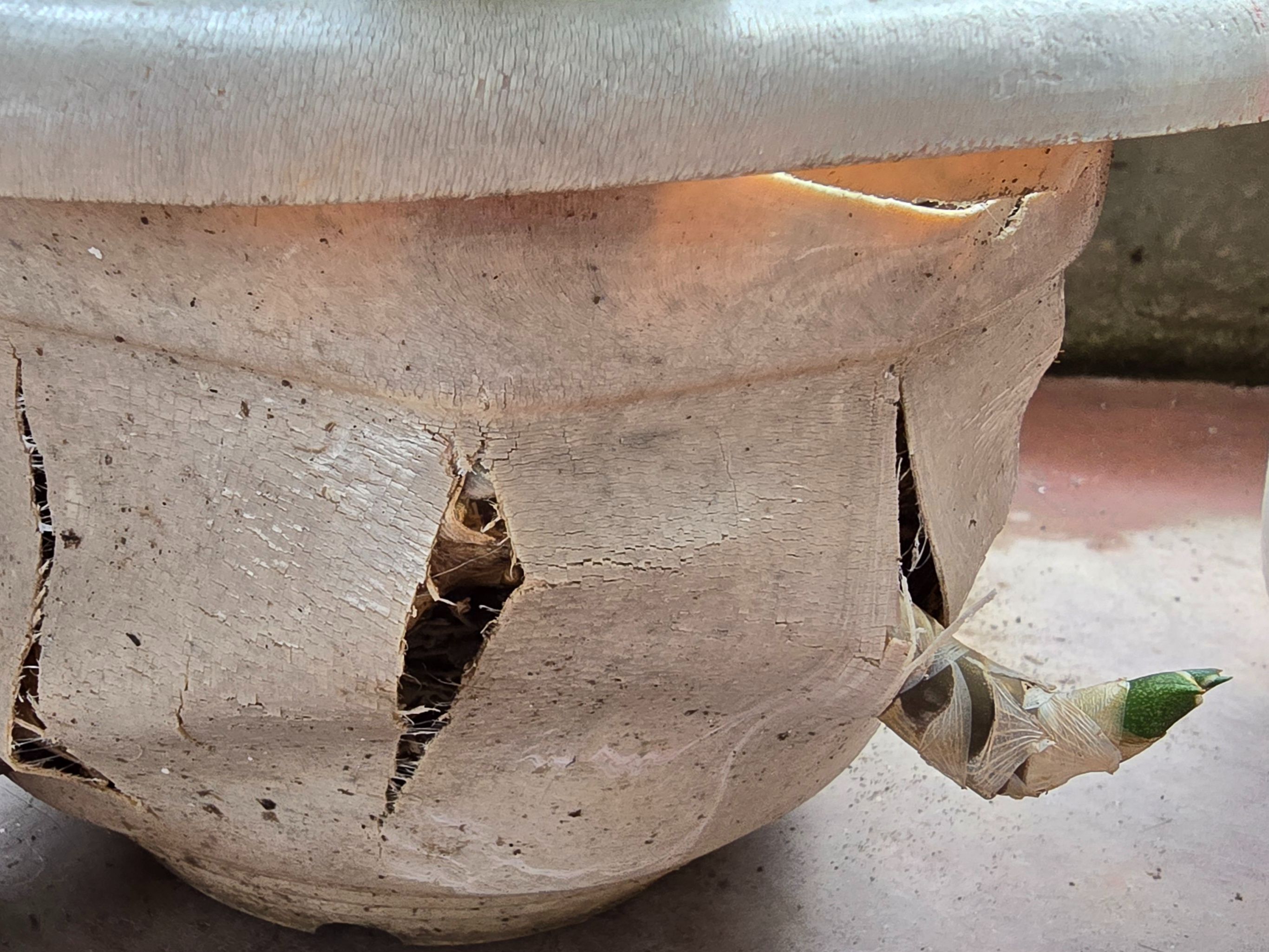 The two types of pots I used on the above photos were bought almost at the same time. Apparently, the smaller one with lighter color is not that durable that it looks so weathered after about two years. That is a proof of low quality for a cheap price. The brown pot looks more promising but is still not spared from the snake plants' desire to multiply. I have been thinking of how to address the pot issue. There were customized cement pots I see on FB marketplace but only one costs almost ten times the cost of a plastic pot. I have dogs that I let loose once in a while so clay pot is not an option because of its vulnerability. It can easily break. I needed a pot that will not break no matter how strong the push of the sprouts are. Then I remembered three old casseroles which I do not use anymore. They were actually beside the trash bin waiting for disposal. One was stainless steel which I set aside. I haven't tried (and did not want to start at that time) to operate the electric drill to make holes at the bottom. I picked the two aluminum casseroles since they are of softer material. I was easily able to make holes at their bottom by just punching a knife. 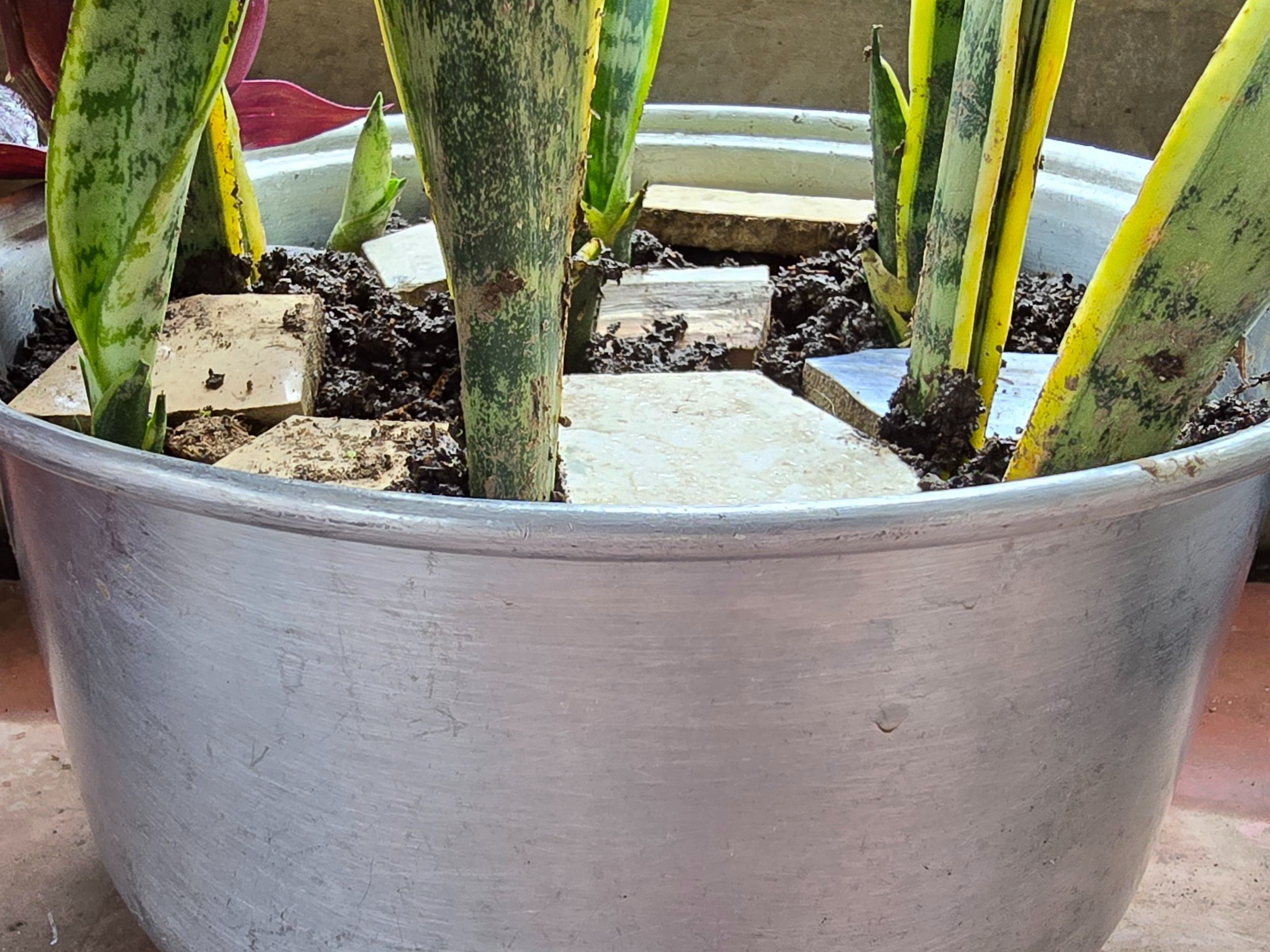 That made me remember and regret about six old casseroles that I gave to scavengers last year. The problem with the plastic pots was not yet obvious at that time so I did not realize the possible use of the old casseroles. I have fifteen pots of snake plant to transplant to a more durable pot. Each pot has several sprouts that I need to split up so I would need about 30 durable pots, or even more. Anyone who has old casseroles that they want to dispose? Send them to me, please. Thank you! 😃
👍 steemph.manila, annazsarinacruz, rye05, upvoteshares, redes, sbi5, unpopular, sbi-tokens, sneakyninja, thedailysneak, letusbuyhive, pishio, portugalcoin, gen-quimba, sunscape, chyxille, josediccus, sekani, depressedfuckup, waralwa, insaneworks, arahman, karja, markone85, holykikyo, aleister, banat, edian, tina-vs, sportal, hive-163084, vragolana, djuramrdja, prudens, ceca74, obsesija, suzana72, daniel-vs, bojan-bee, sanjatea, grad.best, lov.plus, gestex, dorika-bee, getron, jonela, agro-dron, vid.observer, joeyarnoldvn, tootsiegumop-as, trincowski, putu300, tryskele, zoricatech, wayfar, isdarmady, tangmo,